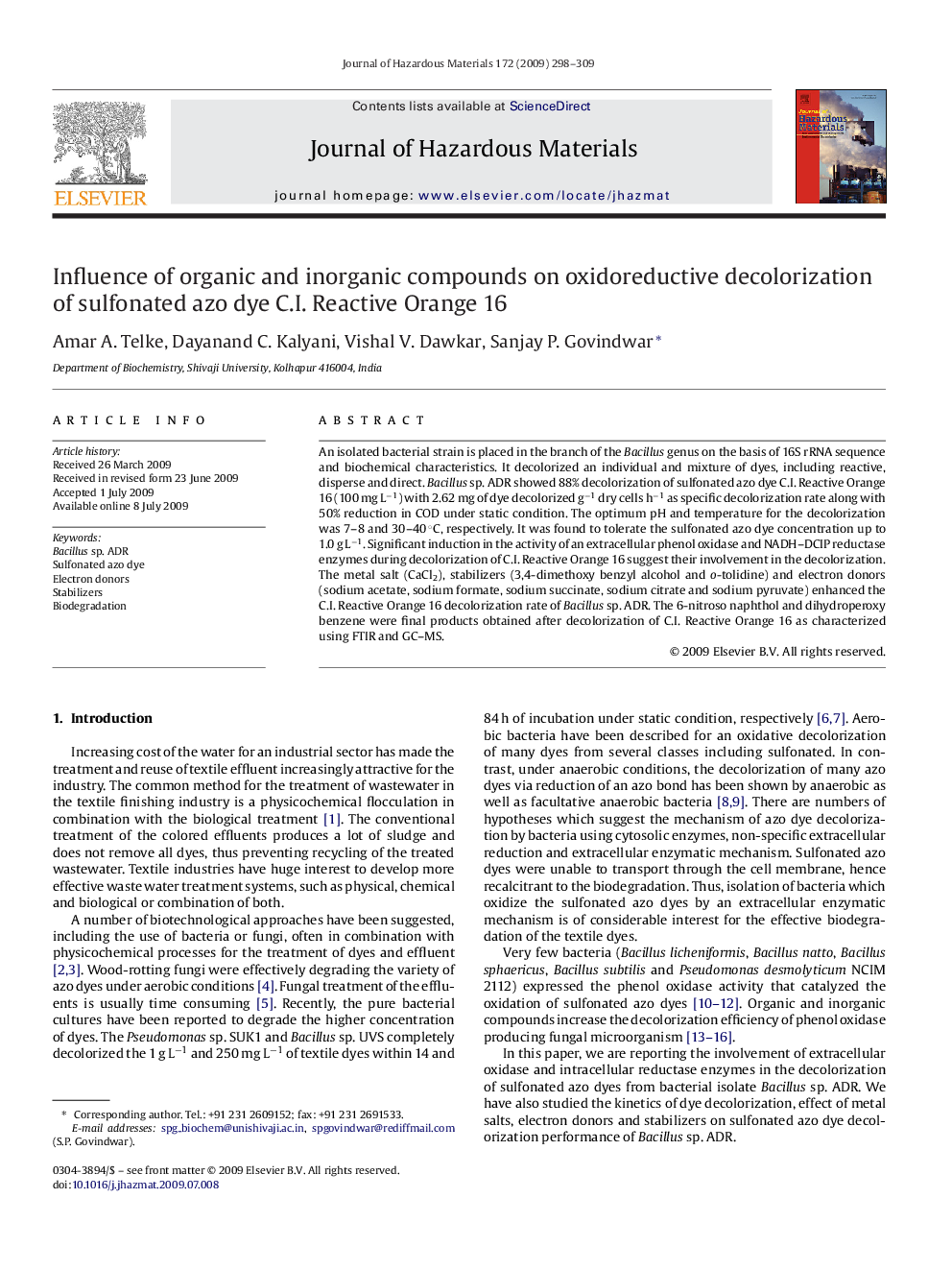| Article ID | Journal | Published Year | Pages | File Type |
|---|---|---|---|---|
| 581067 | Journal of Hazardous Materials | 2009 | 12 Pages |
Abstract
An isolated bacterial strain is placed in the branch of the Bacillus genus on the basis of 16S rRNA sequence and biochemical characteristics. It decolorized an individual and mixture of dyes, including reactive, disperse and direct. Bacillus sp. ADR showed 88% decolorization of sulfonated azo dye C.I. Reactive Orange 16 (100 mg Lâ1) with 2.62 mg of dye decolorized gâ1 dry cells hâ1 as specific decolorization rate along with 50% reduction in COD under static condition. The optimum pH and temperature for the decolorization was 7-8 and 30-40 °C, respectively. It was found to tolerate the sulfonated azo dye concentration up to 1.0 g Lâ1. Significant induction in the activity of an extracellular phenol oxidase and NADH-DCIP reductase enzymes during decolorization of C.I. Reactive Orange 16 suggest their involvement in the decolorization. The metal salt (CaCl2), stabilizers (3,4-dimethoxy benzyl alcohol and o-tolidine) and electron donors (sodium acetate, sodium formate, sodium succinate, sodium citrate and sodium pyruvate) enhanced the C.I. Reactive Orange 16 decolorization rate of Bacillus sp. ADR. The 6-nitroso naphthol and dihydroperoxy benzene were final products obtained after decolorization of C.I. Reactive Orange 16 as characterized using FTIR and GC-MS.
Related Topics
Physical Sciences and Engineering
Chemical Engineering
Chemical Health and Safety
Authors
Amar A. Telke, Dayanand C. Kalyani, Vishal V. Dawkar, Sanjay P. Govindwar,
